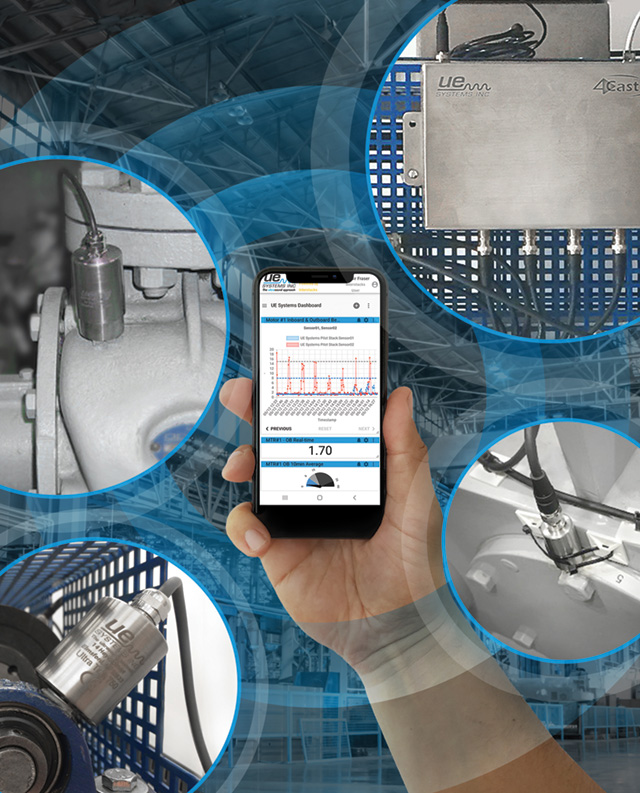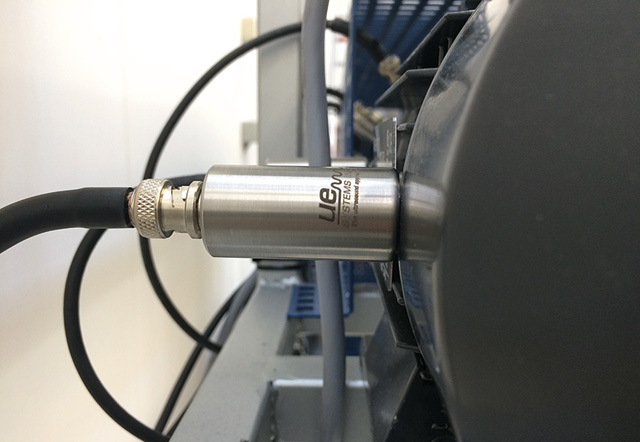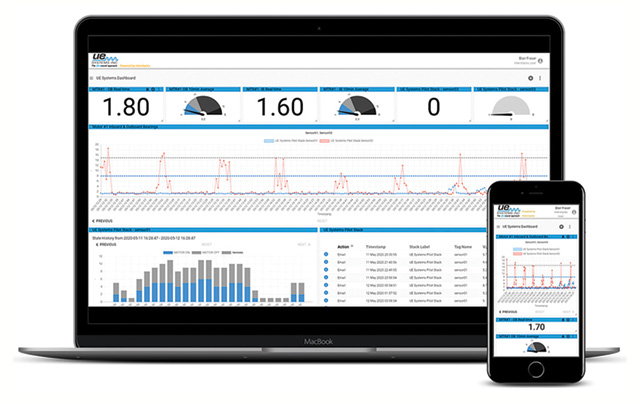When a powerful and versatile technology such as ultrasound meets the internet of things, new solutions arise that will take condition monitoring of assets to a whole new level. The development of ultrasonic sensors and their integration with data collection points promise to be a game changer when it comes to continuous and remote monitoring of industrial assets.

Why ultrasound?
Airborne and structure-borne ultrasound has become a major player in condition monitoring. It was once considered just a leak detector; now more maintenance and reliability professionals are realising all the benefits associated with using ultrasound for condition monitoring applications.
Ultrasound is also well known for its versatility: it can be applied to different domains such as leak detection, bearing condition monitoring and lubrication, inspecting steam traps and electrical inspections.
The surge of ultrasonic sensors
Ultrasonic handheld devices still play an important role, but when we couple the technology with the capabilities that the internet brings, we can create powerful monitoring solutions by using ultrasonic sensors connected to network-enabled devices. The sensors collect data from assets in the form of dB readings and send them to central devices which process the data. This brings a huge potential for improvements on maintenance and reliability programmes. We can now set up alarms, notifications, trend the condition of assets…
Sensors for mechanical assets

Imagine you have an asset at your facility, let’s say a bearing. This is a critical asset that simply can’t fail. An ultrasound sensor can be permanently mounted on the bearing, continuously collecting dB readings and sending them to a data processing box. Is the dB reading abnormal?
You get notified by email or SMS. You are always on top of your asset’s condition. Alarms can be set up according to your needs: want to know when a bearing needs lubrication? When there’s a damage to it? Want to have a sound recording of the bearing when an alarm is reached? Everything is possible, since maintenance managers will be able to set up their own alarm thresholds and notifications.
Sensors for electrical assets
The same applies to ultrasound applications requiring airborne sensors, such as electrical inspections. Place the airborne sensors next to your critical equipment, and they will be constantly listening to these assets. As soon as something abnormal is picked up by the sensors, data in the form of dB readings and sound recordings will be sent to a central processor, triggering alarms and notifications. Ultrasound plays a key role in finding electrical faults such as corona, tracking, arcing or mechanical looseness. Coupled with online sensors, improvements in safety and inspection methods could be huge.
New ultrasound-based IIoT solutions
There are already easy to implement solutions on the market that couple ultrasound technology with sensors and network-connected devices, allowing for truly continuous and remote monitoring.
For bearings and other mechanical assets, there is the On-Trak, a remote IIoT bearing monitoring system. It’s composed of 16 sensors and a central processior that can be connected to the network via Wi-Fi, ethernet or cellular data. Data from the sensors can be easily viewed on any laptop, tablet or phone.

Another solution for bearing monitoring is the 4Cast, working with the RAS (Remote Access Sensors) from UE Systems. Up to four sensors can be connected to a 4Cast box, which then connects to the network via Ethernet to provide data insights from the bearings. Its great advantage is the ability to record and store sound samples from the monitored bearings –a great solution for critical and slow speed bearings.
For electrical safety there is a solution such as the 4Site available. Similar to the 4Cast, it can record and store airborne dB readings and sound samples from up to four sensors.
Conclusion
From handheld devices to connected sensors – this is the natural progression of ultrasound technology when used in industrial environments for maintenance, condition monitoring and reliability. As with other technologies, integration in the IoT world will become a fact, and though the current solutions are already bringing exciting advances, there is still much to discover and explore.
Christopher Hallum, UE Systems Regional Manager UK and Ireland
chrish@uesystems.com

